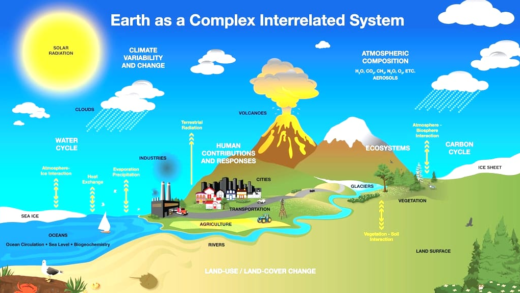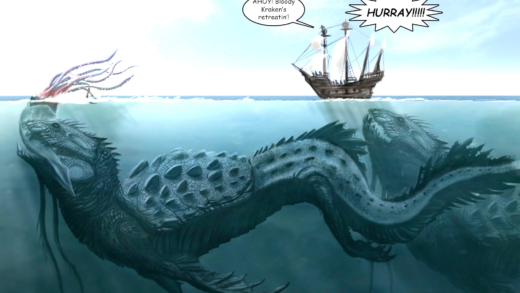The article explores the theory of evolution, detailing its mechanisms, evidence, and common misconceptions. It emphasizes the importance of studying evolutionary processes, the role of natural selection, and how human activities influence future evolutionary paths. Misunderstandings about evolution are addressed to clarify its scientific basis.
What is the Theory of Evolution?
Theory of evolution explains how species change over time through processes like natural selection and genetic drift. It highlights the connection between all living organisms, showing that we share a common ancestor. Understanding this theory is crucial because it provides a framework for studying biological diversity and the adaptations of organisms to their environments.
The Origin of Life
Evolution helps us grasp where life originated. Imagine life as a tree, with branches representing different species. The trunk symbolizes the common ancestor from which all life evolved. Through simple chemical reactions on early Earth, molecules combined to form the first living organisms, which eventually diversified. This analogy illustrates how life began from basic components and evolved into complex forms.
Main Mechanisms of Evolution
Key mechanisms of evolution include natural selection and genetic drift. Natural selection is like a game of survival; organisms with favorable traits are more likely to reproduce, passing those traits to the next generation. Genetic drift, on the other hand, is a random process that can cause certain traits to become more or less common in a population. For example, a small group of animals might carry a unique trait simply due to chance, altering the genetic makeup of future generations.
Mutations: The Building Blocks of Evolution
Mutations are changes in DNA that introduce new traits. These changes can occur randomly or due to environmental factors. Some mutations may be beneficial, providing advantages in survival, while others might be harmful. For instance, a mutation in a plant could enable it to tolerate drought better, enhancing its chances in a changing environment. Understanding mutations is vital because they drive the evolutionary process by creating genetic diversity.
Natural Selection: The Survival Game
Natural selection is a fundamental mechanism of the theory of evolution. It explains how certain traits become more common in a population over time. Imagine a game of hide and seek—some animals have better camouflage than others. Those that can blend in are less likely to be spotted by predators, thus they survive longer and reproduce more. This concept can be summarized in a few key points:
- Survival of the fittest: Organisms with advantageous traits survive and reproduce.
- Adaptation: Over generations, these traits become more prevalent in the population.
- Environmental influence: Changes in the environment can shift which traits are advantageous.
For example, consider the peppered moth. In industrial England, darker moths became more common due to pollution darkening tree bark, making them harder for predators to see. This is a clear case of natural selection in action.
Evolution in Action
Evolution is not just a historical concept; it occurs right before our eyes. One striking example is the rapid evolution of antibiotic resistance in bacteria. When antibiotics are used, they kill susceptible bacteria, leaving behind those that have mutations allowing them to survive. Over time, these resistant bacteria multiply, leading to strains that are hard to treat. Here are a few more examples:
- Darwin’s finches: These birds in the Galápagos Islands have evolved different beak shapes based on available food sources.
- Insect resistance: Some insects develop resistance to pesticides, showcasing evolution in response to human actions.
- Color changes in animals: Urban environments can lead to changes in coloration for better camouflage.
These instances illustrate that evolution is a dynamic process, constantly reshaping species.
Evolution and Humans
Humans are a product of evolution, tracing our lineage back to common ancestors shared with other primates. Our unique journey involves several key developments:
- Bipedalism: Walking on two legs freed our hands for tool use.
- Brain size: Larger brains enabled complex thought and social structures.
- Language: Our ability to communicate sets us apart from other species.
Understanding our evolutionary history helps us appreciate our place in the natural world and the ongoing processes that shape our species.
Evidence Supporting Evolution
Numerous lines of evidence support the theory of evolution, providing a robust framework for understanding biological diversity. Some key types include:
- Fossil records: Fossils show a progression of life forms over millions of years, revealing transitional species.
- Genetic studies: DNA analysis demonstrates similarities between species, supporting common ancestry.
- Comparative anatomy: The study of physical structures reveals homologous traits in different species, suggesting shared origins.
For instance, the forelimbs of whales, bats, and humans share a similar bone structure, indicating they evolved from a common ancestor. This evidence collectively strengthens our understanding of how life has evolved over time.
Studying Evolutionary Processes
The study of evolutionary processes is vital for understanding how species adapt and change over time. Scientists employ various methods to investigate evolution, including:
- Field Studies: Observing organisms in their natural habitats allows scientists to collect data on how species interact with their environments and evolve over time.
- Laboratory Experiments: Controlled experiments help researchers understand specific evolutionary mechanisms, such as the effects of mutations on survival rates.
- Genetic Analysis: By examining the DNA of different species, scientists can trace evolutionary relationships and identify genetic variations that contribute to adaptation.
These methods provide a comprehensive approach to studying evolution, allowing scientists to piece together the complex puzzle of life’s history.
Common Misconceptions about Evolution
Misconceptions about the theory of evolution can lead to misunderstandings. Here are some common myths:
- Evolution is just a theory: In scientific terms, a theory is a well-substantiated explanation based on evidence. The theory of evolution is supported by extensive research.
- Humans evolved from monkeys: Humans and monkeys share a common ancestor, but they are distinct species that have evolved separately.
- Evolution happens quickly: While some changes can occur rapidly, most evolutionary processes take thousands or millions of years.
Addressing these misconceptions is crucial for promoting a clearer understanding of evolution and its implications for all life forms.
The Future of Evolution
Looking ahead, the future of evolution is shaped by environmental changes, human activities, and advancements in technology. Key factors include:
- Climate Change: Alterations in climate will influence which species survive and adapt, potentially leading to new evolutionary paths.
- Genetic Engineering: Advances in biotechnology may allow humans to influence evolution directly, raising ethical questions about our role in shaping future life.
- Conservation Efforts: Protecting biodiversity can help maintain the balance of ecosystems, ensuring that evolution continues to thrive.
Understanding these factors is essential for predicting how life on Earth will evolve in the coming years.





Comments are closed.